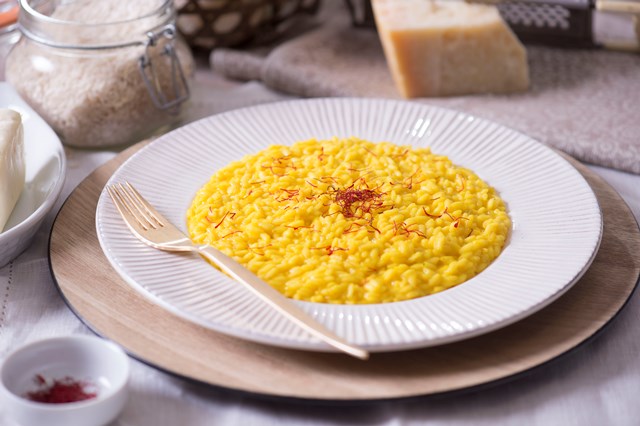The use of saffron in cooking has been a tradition for centuries, but did you know that it also offers numerous health benefits, including the ability to lower cholesterol and aid in weight loss?
Saffron, known as “oro rosso” or “red gold,” is a valuable spice obtained from the flowers of Crocus sativus. This precious spice is not only revered for its unique flavor and color, but also for its antioxidant and anti-inflammatory properties. Integrating saffron into your diet can be a delicious way to promote heart health and maintain a balanced lipid profile.
The bioactive compounds present in saffron, such as crocin and crocetin, act as powerful antioxidants, counteracting oxidative stress and reducing the accumulation of harmful cholesterol in the arteries. This spice can also mitigate inflammation in the body, playing a key role in preventing cardiovascular disease and other inflammation-related disorders.
In addition to its heart-healthy benefits, saffron can also aid in weight loss. Its active compounds help regulate food cravings, reduce calorie intake, and positively influence mood, helping to prevent overeating caused by stress or negative emotions.
However, it is essential to consume saffron in moderation and under the supervision of a doctor, especially if you have pre-existing medical conditions. Excessive doses of saffron can cause adverse effects such as nausea, dizziness, or gastrointestinal disorders. Individuals with sensitive digestive systems or allergies should exercise caution when consuming saffron, and those taking psychotropic drugs should consult a health professional, as it may interact with such substances.
Saffron can be incorporated into various culinary preparations, such as risottos, teas, or soups, with a recommended dosage of 0.5-1 gram per serving. Consulting an expert, such as a nutritionist or dietitian, can help tailor the use of saffron to individual needs and ensure safe and effective results.
The history of saffron spans over 3,500 years, with its use originating in Asia Minor and later spreading to regions such as the Middle East, Greece, and Spain. Throughout history, saffron has been highly valued for its culinary and medicinal properties, and today, its cultivation is prominent in countries like Iran, Spain, and India.
So the next time you reach for a pinch of saffron to enhance the flavor of your dishes, remember that you’re not only adding a touch of richness to your meals, but also reaping the health benefits that this precious spice has to offer. It’s truly a testament to how the intertwining of culture, trade, and traditions has shaped the significance of saffron in multiple civilizations over the centuries.
